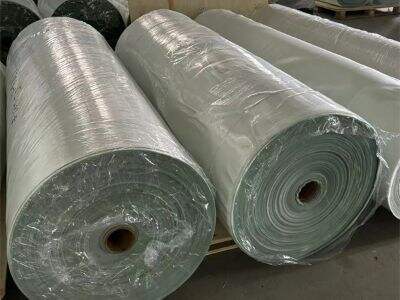Fiberglass is a very strong, tough and solid material that gets used in a variety of different projects. Fiberglass: A Renwu fiberglass fiberglass fabric is used for everything from buildings to boats, auto parts to sports equipment. This unique material is considered long-lasting, meaning it does not easily break down over time and will not require immediate replacement. In this guide we will introduce the various types of fiberglass fabrics and detail the unique characteristics and advantages of each type.
What is Fiberglass Fabric?
Fiberglass fabric consists of super small strands of glass that have been woven together to form a solid piece of fabric. You can produce a variety of products from this special fabric. Fiberglass is widely recognized for its great strength Property which allows it to withstand heavy pressures without damage. It is also heat and chemical resistant so it will not degrade easily with exposure to these elements. A huge plus with fiberglass is being a good insulator, electricity is repelled allowing it to be safe in various scenarios. Also, fiberglass can have a variety of textures and patterns based on the requirements of a project, so it is an incredibly versatile and useful material.
Fiberglass Fabric: Woven vs Non-Woven Fiberglass
There are basically two types of fiberglass fabrics that you need to know about: Woven and Non-Woven.
Woven fiberglass fabrics consist of the small glass fibers being woven together in a specific pattern, similar to how standard cloth is made. The material becomes strong and durable due to its weaving process so it can be used for many purposes. Renwu fiberglass fiberglass fabric roll can, for instance, be employed in boat construction or in the fabrication of sporting equipment.
In contrast, non-woven fiberglass is created by loving the individual increments of glass fibers into a one sheet. Using this method results in a material that is extremely strong and resilient, and is often used in applications where additional strength is necessary. In construction and manufacturing, non-woven fiberglass is widely used, due to its potential to provide reliable assistance.
Uses of Fiberglass Fabrics
Fiberglass fabrics can be quite useful in various fields, from construction to leisure activities.
Fiberglass also greatly contributes in construction business. It is commonly made into insulation for homes that provides warmth in the winter and coolness in the summer.] Bridges and tunnels are also made from fiberglass because it is strong and can hold up even under heavy loads.
YOU HAVE BEEN RECREATION fiberglass is used for everything from thousands of different outdoor equipment, such as tennis rackets, golf clubs, and football helmets, to other recreational equipment that is much smaller. It is utilized, for example, to make boats, kayaks, surfboards, water skis, even fishing rods. Fiberglass is ideal outdoors sports gear that need to resist water and rough conditions, due to its strength and toughness.
Distal Fibrous Perplexing of Fiberglass
Fiberglass cloth is available in many different patterns and textures to suit the requirements of individual projects.
The most common type of fiberglass cloth is plain weave. This kind of material is easy to manufacture and is great for producing smooth surfaces free of features, something needed for many uses.
When we talk about twill weave sounds very similar to plain weave with a slight difference in the pattern as diagonal pattern. Its diagonal form gives it added resilience and durability.
The most complicated type is satin weave fiberglass cloth. It has a napped finish that gives a smooth and shiny surface making it ideal for projects where appearance is significant.
Tips for Using Fiberglass
As you prepare to apply fiberglass cloth in a project, here are some tips to help you get the most out of your experience:
Always work in a well-ventilated space. That matters because the fumes from fiberglass resin can be dangerous when released into the lungs, so you want a clear trajectory of airflow.
Just make sure to wear gloves and protect your skin from the resin because it can be irritating.
Resin needs to be applied evenly when working with fiberglass cloth, and do this very quickly as well. This matters because the material can harden before it has adhered completely to the surface.
Make sure to sand your surface down to a smooth, finished product without any blemishes after redoing it with fiberglass cloth.
Conclusion
Wrapping Up: Fiberglass cloth is a strong and adaptable material utilized in various kinds of construction, recreational, and many other problems. Fiberglass cloth is an essential supply for crafting reliable and long-lasting products, whether it's for boats, sports gear or insulation. With this modeling guide in mind, as well as the different kinds of fabrics you can use and some simple best practice tips for getting the most out of your fiberglass fabric, you can incorporate this material into your various projects successfully. Results you want, which will help you get. Often places a high quality product, like a Renwu fiberglass fire resistant fiberglass fabric, quite a wide product guide. I encourage you to check these out and see if they are right for your project!

 EN
EN





























